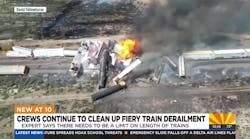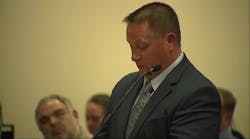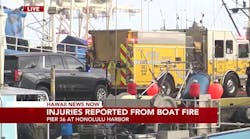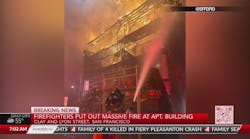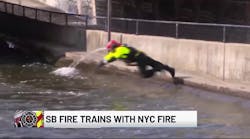Due to the number of fire and rescue calls that we run in Miami Dade County, FL, on a daily basis, sometimes we tend to get a bit complacent when approaching a scene by not taking the time to conduct the proper scene size-up of the situation at hand, which can result in firefighter injury and, in the worst-case scenario, a firefighter death. The following two calls are good examples of how scene size-up paid off and may have prevented a very negative outcome while firefighters worked to mitigate both fire incidents.
Vehicle fire. While riding on Engine 14, we received a call for an auto fire on Bird Road and 65th Avenue at about 4 P.M. The column of smoke was visible a few blocks away and after turning west on Bird Road, we found out that the fire was actually on Southwest 39th Street and 66th Avenue. Upon arrival, we found a heavily involved 1980s work van that had been parked on the right of way.
As the 100-foot front-bumper 1¾-inch jumpline was extended, I conducted a quick walk-around the van and noticed that a tar pot from a roofing company was attached to the rear hitch. Even though the tar pot was not involved in the fire, I noticed that it was missing the propane tank and I immediately alerted my firefighters about it so they could concentrate on extinguishing the cargo compartment of the van instead of the front passenger area.
When the owners of the van arrived on scene, they advised us that there was a 100-pound propane tank inside the cargo area by the rear door that was half full. By this time, that part of the van had been extinguished and after full extinguishment of the van, my crew concentrated in cooling off the propane tank to prevent a BLEVE (boiling liquid expanding vapor explosion) that would have been catastrophic.
House fire. While riding Rescue 40, we received a call at about 7:15 A.M. for a house fire one block north of West Flagler Street and 73rd Avenue. Heavy smoke was seen in the area as we approached from the east. Upon arrival, we found a heavily involved single-story structure with heavy flames and smoke from at least three windows and the front door.
After my initial size-up, I immediately made this assignment a working fire, Code 1, while taking command. The smoke was heavy and low all around the house and visibility was poor. As my crew prepared for a limited primary search and evacuation of residents in the front driveway, I conducted a walk-around the structure that gave me very good and valuable information about the structure.
The first characteristic that I noticed was that this was no single-family residence because it had been divided into five efficiency apartments that would cut off access from all sides once inside the structure. The second hazard that I was able to identify while at the rear of the structure was an empty swimming pool about four feet from the rear door where firefighters later would exit during extinguishment and ventilation tactics. This information was passed on to Battalion 12 as he assumed command and all the involved units were alerted before an injury could occur.
The reason for this article is to remind us of how important scene size-up is on these types of calls. But let us remember that the call does not have to be of great magnitude involving fire and destruction. Scene size-up is part of our daily routine responses too as conditions change rapidly because of the things that are involved in performing our duties, and for that reason a good scene size-up will always pay off.
Jose A. Nochea is a 13-year veteran of the Miami-Dade Fire Rescue Department in Florida, currently holding the rank of captain and working in the Operations Division. Nochea is a State of Florida certified paramedic and tactical response technician (TRT), and has taught courses in Community Emergency Response (CERT), EMS and leadership for the fire department’s officer development program.